Posts: 1,424
Threads: 12
Joined: Dec 2015
Reputation:
139
And working with the large structures first - another great technique - thanks!
“Today, give a stranger one of your smiles. It might be the only sunshine he sees all day.” -- H. Jackson Brown Jr.
CD Sketchbook
Posts: 2,817
Threads: 15
Joined: Jun 2013
Reputation:
109
the stepping back thing is extremely useful, specially if you can print out the photo and have it next to your drawing so you can take longer steps back
Posts: 56
Threads: 0
Joined: Nov 2019
Reputation:
16
All good dude. All form is geometry, and even more so if wanting to be naturalistic/realistic with your approach.
Artistic expression is how that geometry is filtered and expressed through you. Without understanding/drilling the geometry you won't be as able to self-troubleshoot effectively or know what aspects you can be expressive with and still maintain some form of cohesive integrity to your work.
Likeness tends to be very hard because it entails patience and not skipping the 'boring bits' of measuring and placement, at least until your eye for it improves to a more intuitive level. I struggle with likeness too especially from life. It is much "easier" with a photo that doesn't move but also can lend itself to being very stagnant when working from photo alone.
Posts: 1,424
Threads: 12
Joined: Dec 2015
Reputation:
139
@Fedodika: Yeah I've been using the Stepping Back technique a fair bit this time around.
@Who: All form is geometry - reminds me of Scott Robertson's How To Draw book - I need to go back to that ...
So I'm still working on accuracy but my main aim is to get more comfortable with manipulating acrylic paint.
Here's the ref.:
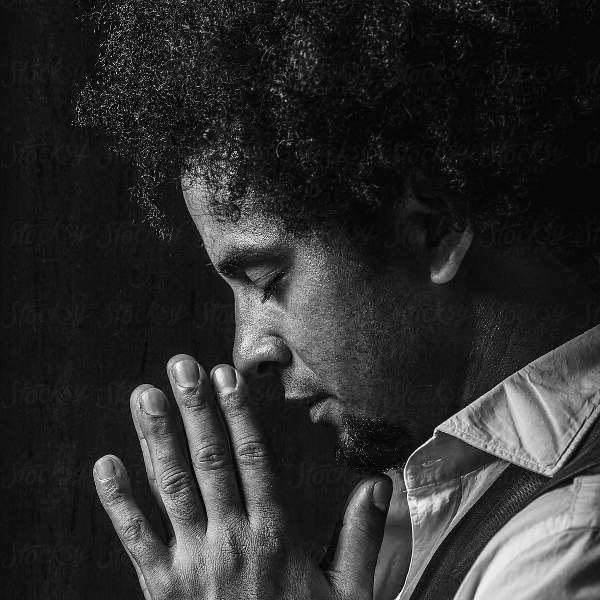
The pencil drawing:
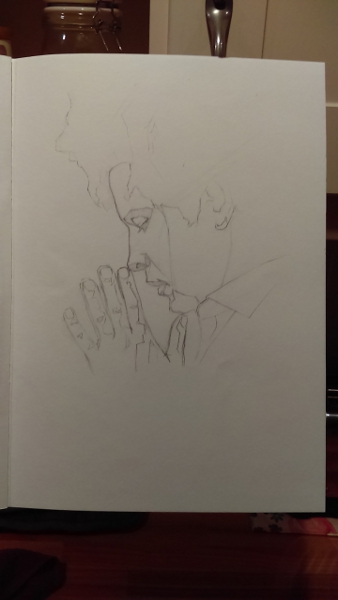
The darks. Learning from my previous painting - I designed the abstract background ahead of time rather than just going for it randomly:
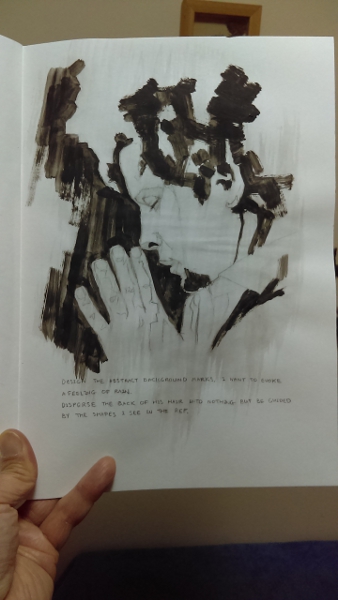
The lighter darks - I feel like I watered down the lighter darks a bit too much. I wanted to see the brush strokes but the paint was too watery to hold the brush marks:
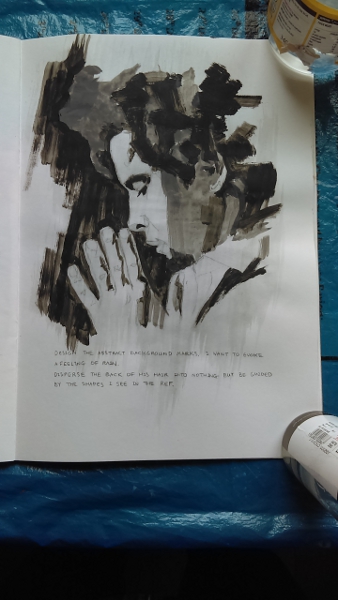
Added the lighter tones and did a bit of detailing:
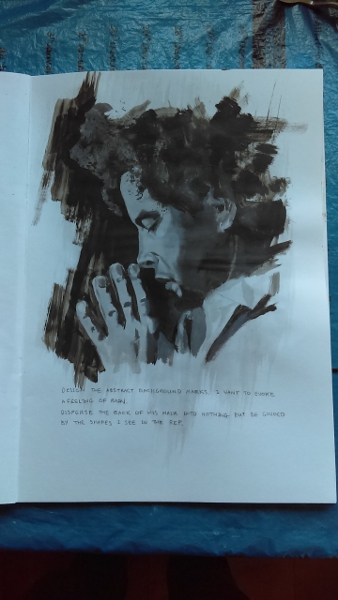
Next to correct some of the shapes and finish off with the highlights.
Any critique would be most welcome. Cheers!
“Today, give a stranger one of your smiles. It might be the only sunshine he sees all day.” -- H. Jackson Brown Jr.
CD Sketchbook
Posts: 38
Threads: 2
Joined: Oct 2015
Reputation:
2
Hey dude,
two things I can say right now - for perspective watch Coldburger (Christian Fell)'s streams and find his stuff about perspective, if you cant, ask him about perspective exercises. The things you're doing now, although they do look somewhat accurate, wont help you much in the long run. Once you understand the correct way to improve and learn, everything's going to start progressing rapidly, but until then, those perspective drills wont change much. I'd actually doing gesture drawing using riot art as reference or something else that is dynamic and has a lot of foreshortening.
The second thing - try to be confident in your work. One of the most important things in art is that the image looks convincing. That means basically that you should think about why you're doing stuff (when you're aiming to produce finished work) - for example, if you're having a cast shadow is the edge to hard/soft, how does it look? Does it have a muddy feeling to it as if it's not exactly sure what it is, or is it showing exactly the form you intended. This applies to everything.
Just some suggestions from my personal experience. Hopefully they're useful for something.
Posts: 1,424
Threads: 12
Joined: Dec 2015
Reputation:
139
@Danny:
Hey man, thanks for the feedback. I will look into this Coldburger guy.
Also the Riot Games art is awesome with respect to foreshortened figures - definitely good to study from for figures in perspective.
However, my goal with the perspective drills isn't to focus on drawing just figures in perspective but to draw whole scenes in perspective, i.e. to be able to place figures into scenes inside rooms, in a city street etc., do you have any pointers in that direction?
Also, I will work harder to be more confident about my mark making so that my my brushstrokes represent what they are supposed to represent.
Did some more rendering on this man praying piece - gonna move on now but any further critiques would be appreciated so I can take them forward onto my next piece.
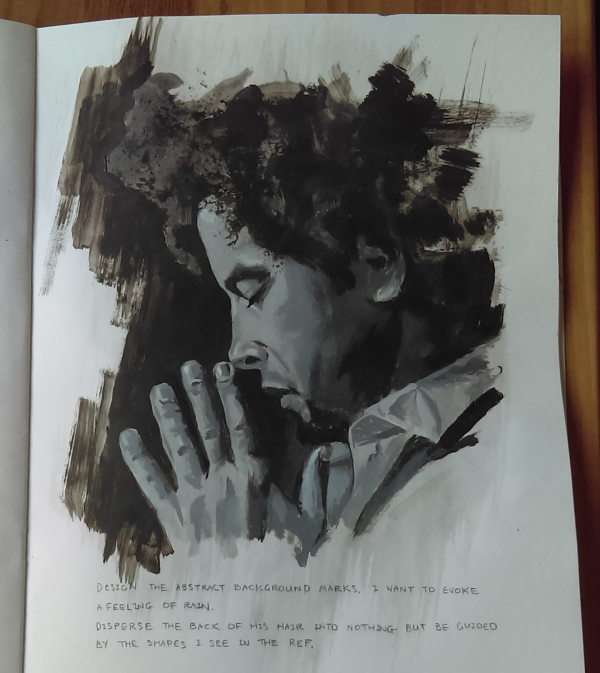
“Today, give a stranger one of your smiles. It might be the only sunshine he sees all day.” -- H. Jackson Brown Jr.
CD Sketchbook
Posts: 1,424
Threads: 12
Joined: Dec 2015
Reputation:
139
Some more traditional practice with acrylics.
Here's the ref.:
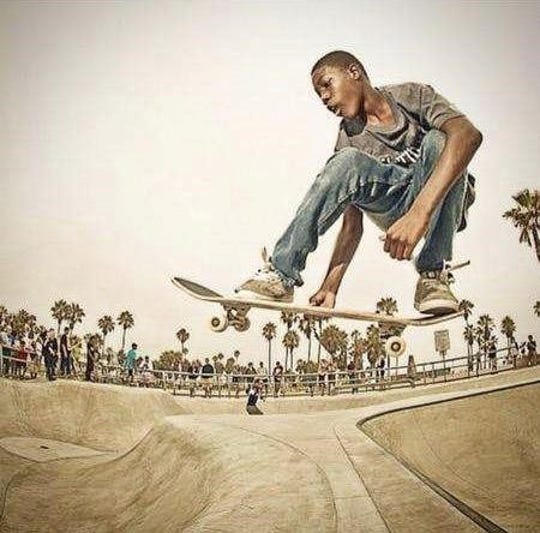
Here's the line drawing:
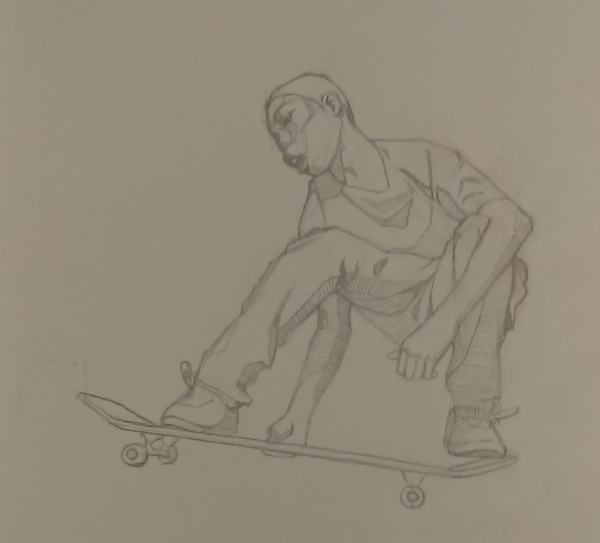
I added a wash to seal in the line drawing and provide a tonal ground to work on but I made it too dark. I used some matt medium which is transparent but then I added too much black to the mixture and obscured some of the linework which caused me some problems to fix later on:
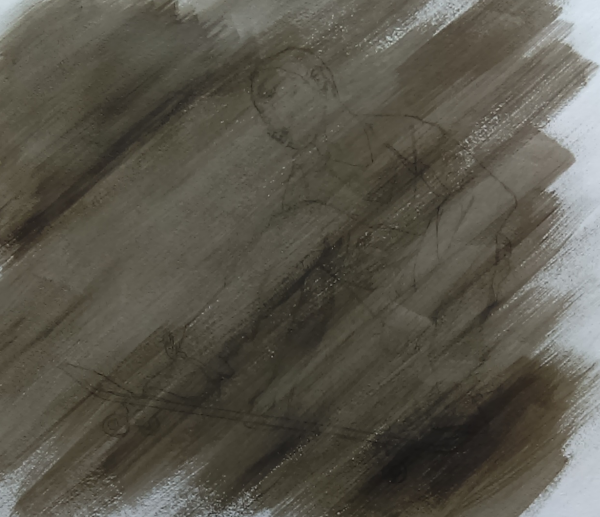
If anyone has any tips on using translucent mediums then I would very much appreciate it - thanks!

“Today, give a stranger one of your smiles. It might be the only sunshine he sees all day.” -- H. Jackson Brown Jr.
CD Sketchbook
Posts: 432
Threads: 70
Joined: Mar 2020
Reputation:
69
Regarding the man praying piece: Looks good in my opinion. The only problem area I can identify is that his thumbnail somewhat blends in with the inner side of his shirt collar; this would probably be fixed by making the edge of his thumbnail darker, which would make it more consistent with the rest of his thumb as well.
Regarding drawing whole perspective scenes with figures: I'm pretty bad at this myself so I have no real advice, but I can hopefully give good suggestions based on the works of artists who ARE good at this. If you have the book Dynamic Figure Drawing by Burne Hogarth or would be willing to get a hold of it, he has a segment near the end where he talks about constructing whole perspective scenes based on measurements taken from a single figure. I.E. you draw a figure, take 2 points from areas you know are horizontally symmetrical (such as from one point of the shoulder to the other, or from one iliac crest to the other), draw a line between them, extend as far as needed, and then use it as a reference for how all other straight lines in the image should converge. I have probably described this very poorly. It's just one technique that may be useful.
Lots of people advise against Hogarth's books because he has a very exaggerated style, but teaching realism is not the point of them. Actually, his books have a lot of pointers that you would probably find useful for drawing comics, since that was his main area of expertise (look at his Tarzan comics - amazing stuff!).
On the other hand, you've got guys like Kim Jung Gi who have apparently developed such a good sense of how things should look from endless practice and observation of life (and a bit of technical perspective practice) that they can construct good-looking scenes with no preparatory grid whatsoever. I don't know if that's an option for most of us though, LOL!
Posts: 151
Threads: 2
Joined: Oct 2019
Reputation:
20
Alright! Well I have read your first page and your latest ones. And I see you do plenty studying. But one of your goals is do make a digital comic so I gotta ask... are you doing storyboards? Not in the fancy way but at least finishing some? To have a pile you can pull from, when you are ready to make one. It's quite tough to come up with stories (at least to me it is, maybe not to you), but I've seen a few people do the same, get caught in improving at art, but never really do any story, so your storytelling might suffer, or not have been nurtured. If you are doing them and not posting them that's fine, just don't forget to start building stories up, creating panels and working those gears.
I did catch that you wrote a page of your comic book a few pages ago? But, paneling and drawing the shots is important too, even if done, with stick figures (although some compositional layout is good too ha ha) for pacing, rhythm and flow, things you won't see otherwise. I'm guessing you have already read Framed ink?
Hmm, traditional I don't know much. Interesting tho your first goal was doing a digital comic, so something changed? Medium is irrelevant tho, whatever makes you the most pumped up!
Keep it up!
Posts: 26
Threads: 2
Joined: Apr 2020
Reputation:
1
(04-14-2020, 06:35 AM)Rotohail Wrote: Alright! Well I have read your first page and your latest ones. And I see you do plenty studying. But one of your goals is do make a digital comic so I gotta ask... are you doing storyboards? Not in the fancy way but at least finishing some? To have a pile you can pull from, when you are ready to make one. It's quite tough to come up with stories (at least to me it is, maybe not to you), but I've seen a few people do the same, get caught in improving at art, but never really do any story, so your storytelling might suffer, or not have been nurtured. Good point Rotohail, I've picked up Story by McKee for that purpose, It's very enlightening. I would also like to write and draw comics, but I've never written any story before.
"It's better to do the right thing poorly, then to do the wrong thing beautifully."
CD Sketchbook
Posts: 1,424
Threads: 12
Joined: Dec 2015
Reputation:
139
@Pubic Enemy: Yeah I had the values all out of whack on his thumb area and never got around to fixing it properly - laziness on my part. Also I've heard loads about Hogarth but never got around to studying him to be honest but I might have a search around see if I can find his stuff on perspective - thanks for the feedback :).
@Rotohail: I feel you're right on the money with the story-boarding. Although I have been writing everyday in my notebook, I haven't done any storyboarding for a loooong time and I feel that this is something I should start right away - great catch dude - thank you so much. I do indeed have Framed-Ink - an awesome book for composing comics. Also, I started off wanting to produce a comic digitally, but along the way I found that I love the process of making traditional art and that changed my goals a bit. However - I still may make my comic digitally - purely for efficiency.
@Leysan: Yeah I once borrowed that book from my brother but I gave it back to him as it was one of his favourite books.
Finished off that skateboarding piece - my initial values were way off so I had to adjust them wildly. I also went back to using some of my cheaper artificial brushes and found that they allowed me to be a lot more accurate with my mark making.
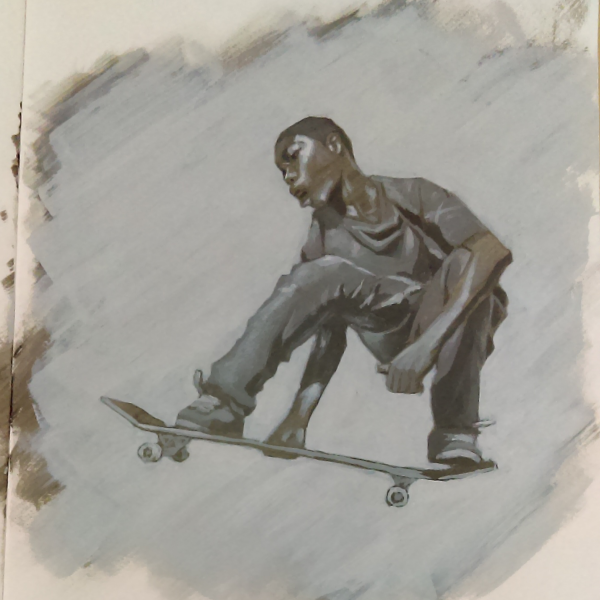
Also, I'm still playing about with scenes in perspective. In this one I was messing about with relative scale trying to make one guy look a lot bigger than the other. I'm finding it a really useful exercise as I had to solve a few perspective puzzles in this one that will help me going forward.

“Today, give a stranger one of your smiles. It might be the only sunshine he sees all day.” -- H. Jackson Brown Jr.
CD Sketchbook
Posts: 432
Threads: 70
Joined: Mar 2020
Reputation:
69
Nice handling of the highlights in that skateboard study; the blue-ish tone of them contrasts nicely with the base skin tone.
I'm no perspective expert, but your perspective sketches look nicely framed in general. It's really easy to place the vanishing points too close, or crop the picture too far from the horizon line and end up with serious distortions at all edges of the picture (especially if you're me, LOL), but you seem to have a good feel for it.
Posts: 1,424
Threads: 12
Joined: Dec 2015
Reputation:
139
Thanks Pubic Enemy :). I actually only used black and white acrylic paint, not sure how the highlights turned out bluish! Also, I studied Scott Robertson's perspective stuff a while back and it's really helping me with these little perspective drills.
Anyway, I'm in quarantine in a single room without access to my paints so thought I'd get back to drawing. I've somehow become scared of drawing from imagination so I am trying to fix that. I've been finding that my initial attempts are disappointing, so I try to identify and fix any problems I see and repeat until I feel happy.
Any pointers on drawing from imagination would be appreciated, thanks!
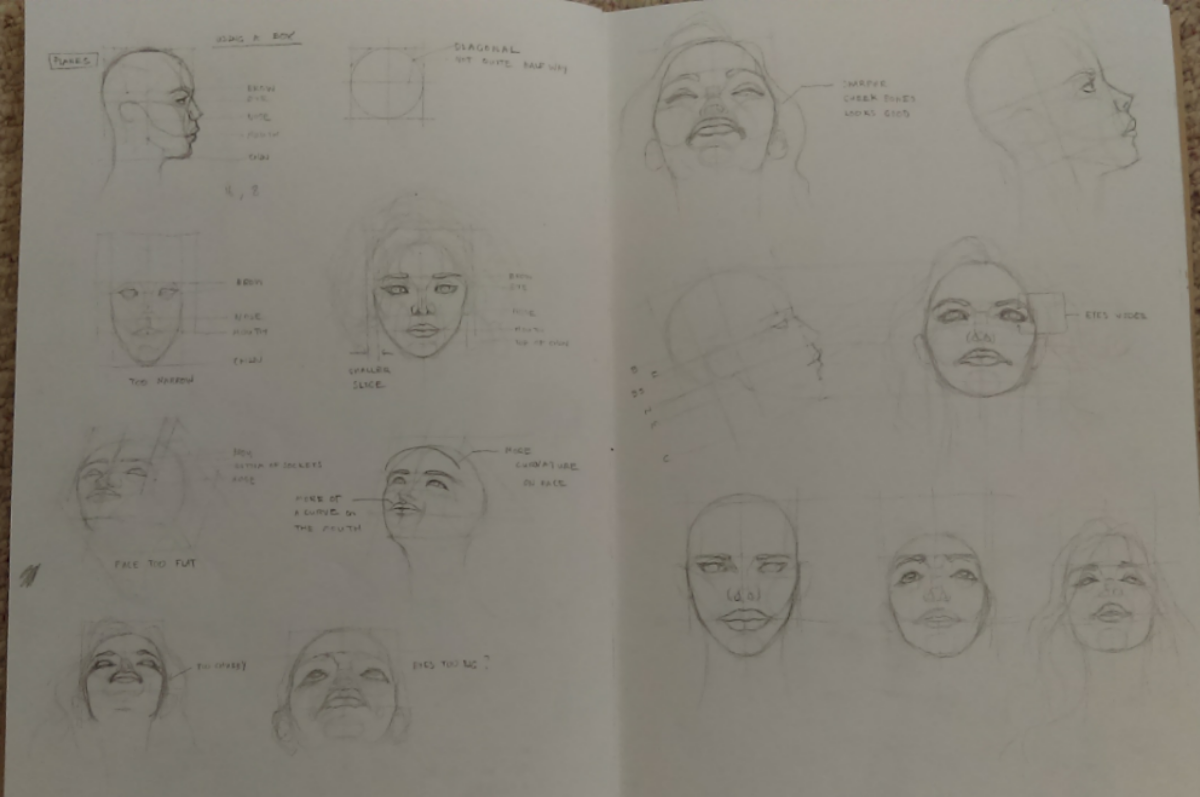
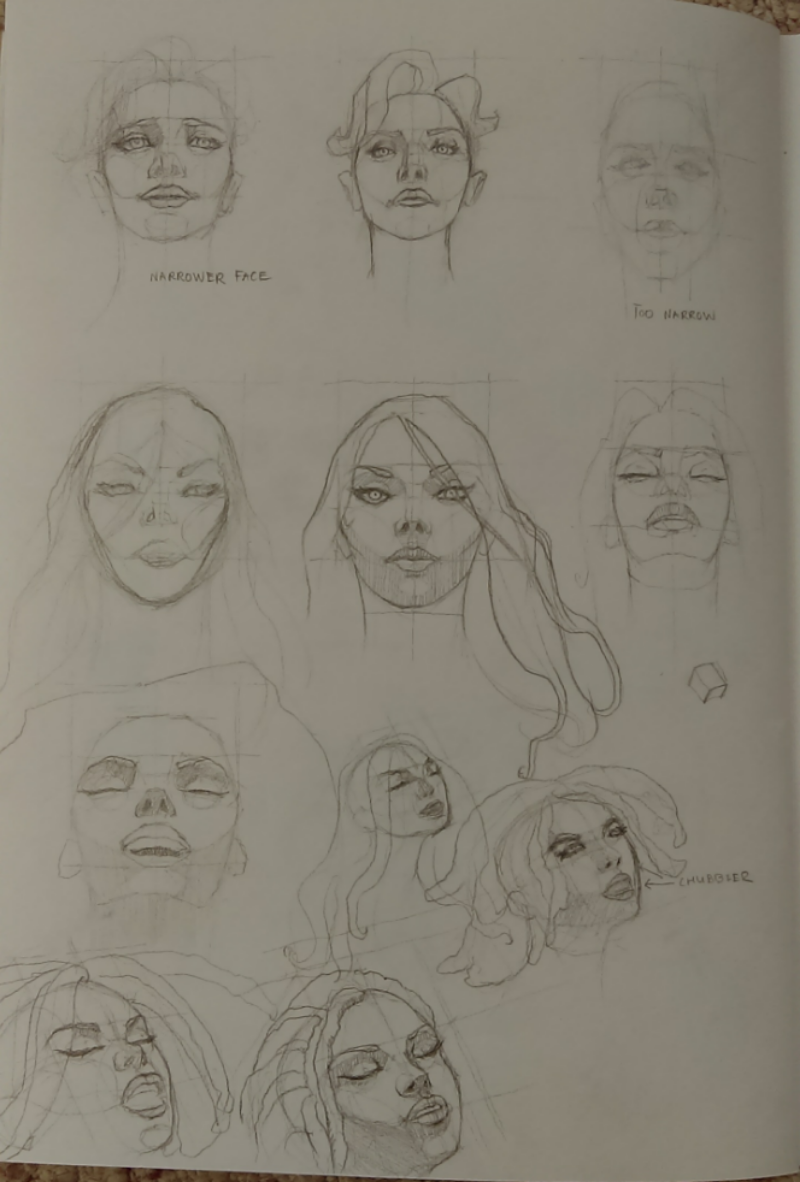
“Today, give a stranger one of your smiles. It might be the only sunshine he sees all day.” -- H. Jackson Brown Jr.
CD Sketchbook
Posts: 482
Threads: 2
Joined: Feb 2017
Reputation:
5
Hey Artloader it's been awhile! nice to see you diving back into some imaginary work which I'm actually picking back up myself.
What I've been doing abit of is memory drawing. So I've been studying the skull to help memorize how it looks from different angles aswell as proportions and then the following day drawing them again from memory to see what I can recall and then developing a few further into a head from imagination. Maybe it's something you can try aswell?
Posts: 1,424
Threads: 12
Joined: Dec 2015
Reputation:
139
Heheh yeah been a while, thanks for stopping by :). Memorizing skulls? Sounds like a great tip, I'll have a go and see how I get on :).
“Today, give a stranger one of your smiles. It might be the only sunshine he sees all day.” -- H. Jackson Brown Jr.
CD Sketchbook
Posts: 26
Threads: 2
Joined: Apr 2020
Reputation:
1
I totally understand being scared of drawing from imagination. For the head I think it's really helpful memorizing and practicing the planes of the head like the Asaro head in Peter's avatar. https://sketchfab.com/3d-models/asaro-he...1a9170561e
"It's better to do the right thing poorly, then to do the wrong thing beautifully."
CD Sketchbook
Posts: 432
Threads: 70
Joined: Mar 2020
Reputation:
69
Some of those faces are quite pretty, so you're obviously not hopeless at this. Drawing well from imagination is my main aspiration, and I think I've recently advanced from being bad at it to merely being mediocre, so I hope I can give you some good ideas. Some thoughts on drawing faces in particular:
Firstly, if you don't have one already; here's a .zip of pictures of the same skull taken from many different angles that I found on another forum (I have no idea who took these but they hopefully intended for people to upload them willy-nilly on the inner-net): https://www.dropbox.com/s/nijwg02tyk7x22...s.zip?dl=0
Studying skulls is enormously helpful, but once you get a good sense of them you have to move on to the soft stuff, which is far more perilous. The easiest way to understand why anything looks the way it does is to understand the underlying structure, which is harder with faces than the rest of the body, because the way that facial muscles contribute to the surface form is not obvious (except for the masseters and, to some extent, the orbicularis oris). The best way I've found to get a good feel for the forms of the face is to study males who are sufficiently sallow-faced that you can see evidence of thin muscles like the zygomaticus (if you have no refs of this type, do an image search for "lipoatrophy" or "Jean-Claude Van Damme"). This is only partially helpful for drawing faces that have fat on them, such as young female ones, but it will help you understand why they look they way they do. Simplified plane heads like the Asaro head Leysan linked are helpful as well.
Posts: 1,424
Threads: 12
Joined: Dec 2015
Reputation:
139
I've been pressing on with drawing from imagination.
I've been asked to do a few paintings by my church so will use this project to improve my drawing from imagination.
The thing I'm experimenting with at the moment is using an iterative process:
1. I draw something from imagination.
2. I study it and make notes on how I can improve it.
3. I do some research.
4. I repeat from step 1 until I am pleased with the result.
I am also taking onboard the advice you guys have been giving and started doing studies from the skulls resource that Pubic Enemy provided (thanks dude).

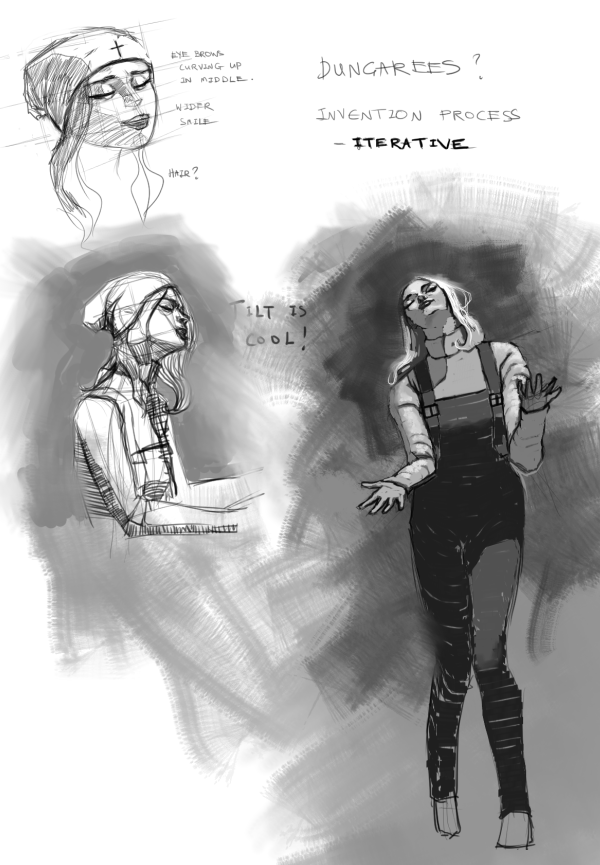
“Today, give a stranger one of your smiles. It might be the only sunshine he sees all day.” -- H. Jackson Brown Jr.
CD Sketchbook
Posts: 1,424
Threads: 12
Joined: Dec 2015
Reputation:
139
Pressing on with inventing stuff from imagination.
I trying not to be such a slave to references any more - instead of just copying a reference straight off - I reckon it is better just to use it as research and maybe only take one aspect of the reference and use it in my work. Maybe I will just grab the lighting design from one reference, maybe the tilt of the head from another and maybe a costume design from another.
Also I am trying to emulate my traditional workflow as I work digitally - eventually this project will be done traditionally.
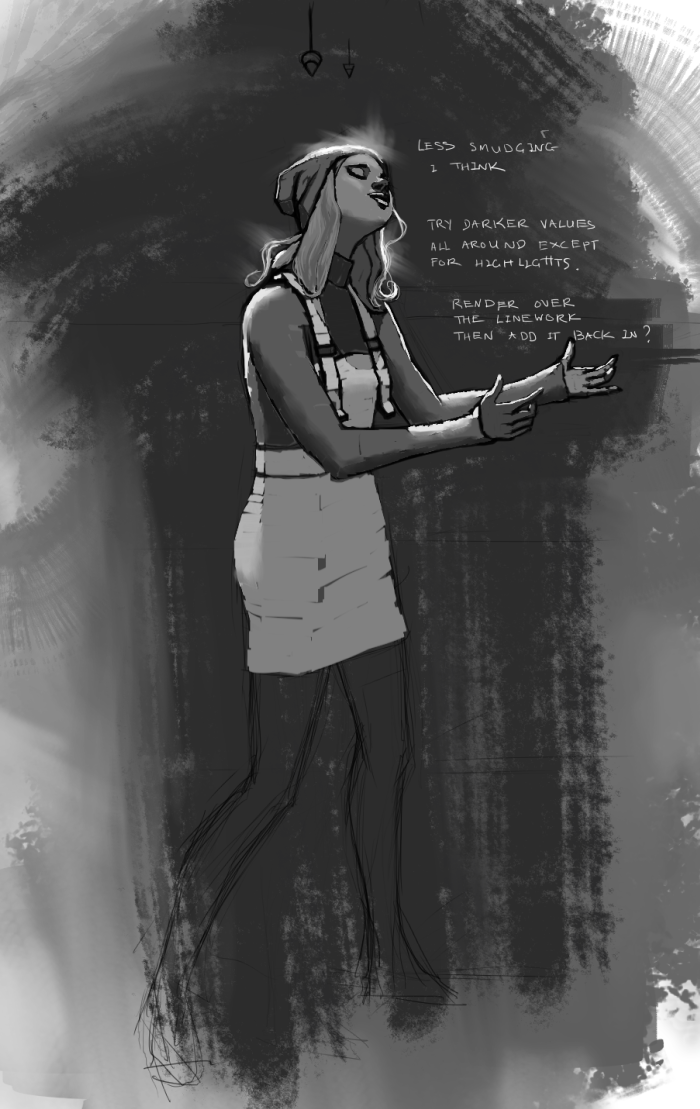
“Today, give a stranger one of your smiles. It might be the only sunshine he sees all day.” -- H. Jackson Brown Jr.
CD Sketchbook
Posts: 181
Threads: 0
Joined: Oct 2017
Reputation:
41
Props to you for starting to explore more imagination based pieces with less reliance on references! I am currently trying to do the same and it's hard AF, so I understand how this transition can not be as easy as it sounds. All I can say is keep going and keep pushing yourself! You'll start reaping the benefits soon enough :)
|

























